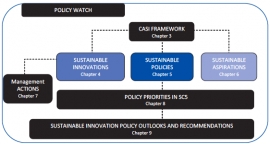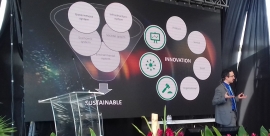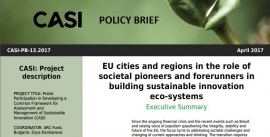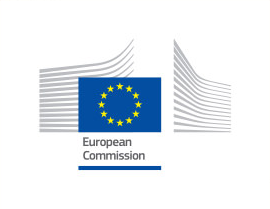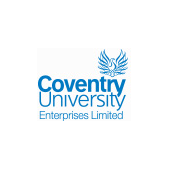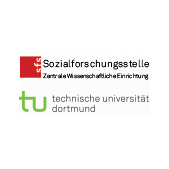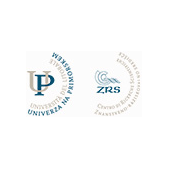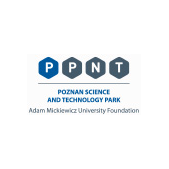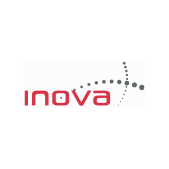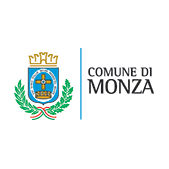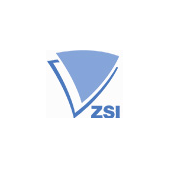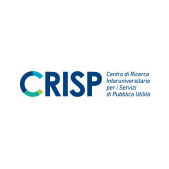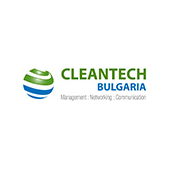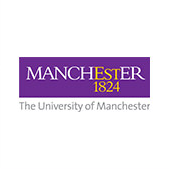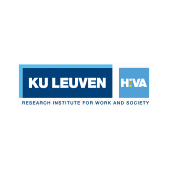Interview with Luděk Moravec, Principal Security R&D Officer (deputy head of unit) and National Contact Point ENLETS (European Network of Law Enforcement Technology Services) at Ministry of the Interior of the Czech Republic.
Q: You have taken active part in CASI Mobilisation and Mutual Learning activities and attended several CASI events, both at national and European level. How/why did you first become interested in CASI?
A: Having reviewed the bulk of EU funded projects seeking some suitable methodological advice in the area of R&D management (notably the agenda setting) I got interested in the procedure CASI advocated. The concept seemed doable and potentially useful.
Q: During the national Policy Dialogue workshop in Prague you were particularly interested in the CASI R&I Policy Agendas. As an R&D Officer, do you think that setting R&I Agendas through structured MML activities involving the end user (i.e. quadruple helix stakeholders of SI) in the assessment and management of key barriers, drivers, opportunities and threats (i.e. critical issues) and associated actions can more effectively facilitate Responsible Research and Innovation (RRI) and the uptake of its results?
A: I do agree with this, but I also see the need to limit the ambition of such exercise from the beginning – “fit for purpose” needs to be the name of the game, especially in setting R&D agendas in specific fields, some modifications to the process as well as the scope may be needed (generally, the more specialized the subject area, the less involvement of general public or volunteer participants). Also, I do see RRI as a feature of R&D management system rather than a standalone agenda (even less a political agenda as it seems to be understood by the EC). In this sense, the MML is a very right instrument to promote the “responsibility” of R&D support through multi-stakeholder engagement, such as the CASI-F quadruple helix approach to the assessment and management of sustainable innovations.
Q: In November 2016 you have also attended the 2-days merged CASI/PE2020 Policy Conference in Brussels. Which policy-relevant aspects and messages did you find particularly interesting and how could they potentially shape the policy regime (e.g. instruments, programmes, mechanisms) at national or EU level?
A: First, to show the impact already happening, I am citing some presentations from the event in the Interdepartmental Strategy for Security R&D support in the CZE 2017-2023. These are Ms. Vauhkonen’s slides on strategic research programmes management in Finland (this is an interesting concept on the management level and notably different instrumental understanding of a research project); and Mr. Bedsted’s talk on citizen engagement. These two approaches we are to adapt (sometimes significantly) and incorporate in our management practices. Moreover, I found the conference rather useful in assessing our current practices against the experiences and wishes of the RRI community (I feel some criteria for such assessment can also be developed from what I saw during the conference). One of the messages I do carry with me since is that RRI is understood quite firmly as a political agenda rather than practical management tool or a systemic feature. Also, I felt certain detachment of the research community from the needs of the end-user community (which is inevitably narrower than “public” thus easily reachable) which wasn’t given enough attention in formulating the procedures and processes especially in agenda setting area.
Q: In a couple of months the CASI project partners will be organising Final Events to promote the main achievements of the project amongst all quadruple helix stakeholders of SI. Would you be interested in attending the final event? If so, what findings would you be most interested in?
A: Yes, I will be interested. The emphasis should be put on the process of a) gathering the data/input and b) its evaluation and methods useful/not useful, limits of the concept, areas of opportunity for further development and the like. Separate place has (of course) the subject matter itself that is the ideas and trends in sustainable innovation. The two (methods and findings) should probably be strictly separated in terms of explanations and presentations.
On behalf of the CASI project, we would like to thank Mr Moravec for his time and active engagement in CASI’s MML activities.
